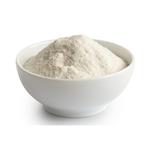Chemical Properties
White or almost white, crystalline powder or colourless crystals.
Uses
L-Asparagine is a naturally occurring proteinogenic amino acid, used in biomanufacturing cell culture systems for the production of therapeutic recombinant proteins and monoclonal antibodies. It is used in the biosynthesis of proteins. It is also required for development and function of the brain.
Uses
L-Asparagine is a naturally occurring amino acid that is not an essential for humans and can be synthesized from central metabolic pathway intermediates.
General Description
Asparagine biosynthesis is catalyzed by glutamine-dependent asparagine synthetase in mammalian tissues. Elevated levels of free asparagine is observed in plants facing stress in the form of drought or high salt. It is also present in senescing leaves and germinating seeds.
Biochem/physiol Actions
Asparagine has high nitrogen to carbon ratio and is a key regulator for nitrogen storage and transport. Its thermal degradation in the presence of sugars leads to the acrylamide formation in foods. Asparagine serves as an amino acid exchange factor and is essential for amino acid homeostasis. It favors cancer cell proliferation.




